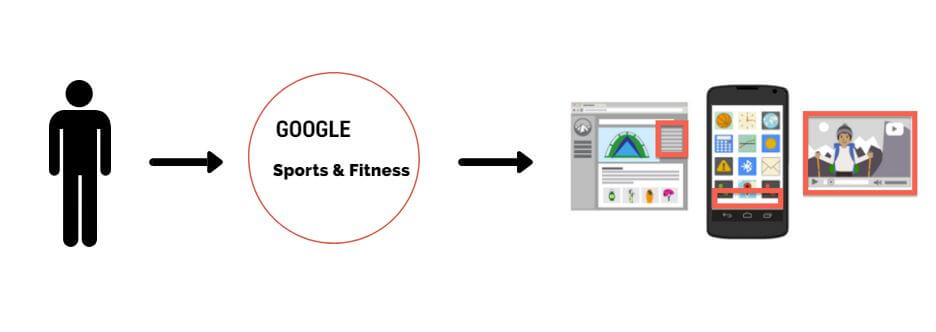Sometimes, online advertising can feel like shooting in the dark. Sure, there are few targeting options you can check off, and maybe you can tailor your message a little bit, but in the grand scheme of things, it’s really all trial and error until you hit that bullseye—that right customer, at the right time, in the right place.
It seems those days may be over—well at least fewer and further between—thanks to Google’s in-market audiences.
A tool that uses Google’s massive amounts of search data to analyze behavioral signals, in-market audience options allow advertisers to target web users who are actually looking for their products (and at a time when they are ready and willing to buy them).
This allows brands to reach further down the sales funnel, better customize their messaging and, in turn, increase the overall effectiveness and ROI of their efforts.
How In Market Audiences Work
Like with most of its algorithms, Google hasn’t spelled out the full method it uses to determine “in-market” consumers.
The company has said it looks for “behavioral signals” that let you “reach potential customers while they’re actively browsing, researching or comparing the types of products you sell.”
Experts seem to think Google is using a mix of advertising and search data to pinpoint these consumers, including things like:
-
- A user’s clicks and conversions on related ads
- The content of websites they’ve recently visited
- How recently and frequently they accessed those sites
Google then puts users into categories based on the products they’re interested in and allows advertisers to select from those categories when setting up display, search or YouTube campaigns.
Here’s an example: Let’s say you’re selling a treadmill. By using Google’s “sports and fitness” in-market audience, you could target users who have recently clicked on ads for other treadmills or workout equipment, looked at reviews of various fitness products, or browsed sites around working out, losing weight or getting fit.

The goal?
To help you reach consumers who are closer to buying and further down the sales funnel. Ultimately, reach this far down the funnel may mean an ad reaches fewer users on the whole, but if the offer and messaging are tailored well enough, it usually means more conversions and a higher ROI, too.
In-Market Audiences for Search
In-market audiences aren’t new; in fact, they’ve been around since 2013—at least for display and YouTube campaigns.
Previously called “in-market buyers,” in-market audiences for display allowed advertisers to reach users with seemingly proven buying intent on their video and display network ads.
But In-market audiences recently became available for search advertising.
In-Market Audiences for Search: Is it Important?
Google looks for browsing signals and behaviors that indicate if a person is in the market or ready to make a purchase.
According to CPC Strategy Paid Search Manager Lewis Brannon, “We don’t know exactly what those signals are, but I would imagine Google probably uses a lot of search behavior that they have at their disposal like recognizing when product pages are being viewed or when people add items to cart.”

“Google is using these types of behavioral signals to determine if a person is in the market and then they’re allowing advertisers to target based on that.”
It’s safe to say that In-Market Audiences for Search is a pretty awesome new feature for advertising. Why?
Well according to Brannon, Search is already considered a more ‘intent rich environment’ than Display.
As he put it: “It’s much more than just serving an ad to someone who is browsing the web, like Display does. Essentially, In-Market Audiences for Search is adding an extra level of intent targeting, which should help improve conversion rates.”
At the moment, in-market audiences for search include these categories:
- Apparel and Accessories
- Autos & Vehicles
- Baby & Children’s Products
- Beauty Products & Services
- Business Services
- Computers & Peripherals
- Consumer Electronics
- Consumer Software
- Dating Services
- Education
- Employment
- Financial Services
- Gifts & Occasions
- Home & Garden
- Real Estate
- Sports & Fitness
- Telecom
- Travel
There are dozens of subcategories under each of these, so be sure to log into your AdWords account and browse through the full list of in-market audiences. The more drilled-down you get (and the more you tailor your messaging to that drilled-down segment), the better your results will likely be.
Reach More Viable Customers
Whichever advertising method you use, in-market audiences can help you reach better, more viable customers for your business. Where other targeting options display your ads to people simply interested in the genre of products you have to offer, in-market audiences for search and display let you touch users who have shown they’re ready and willing to buy—right this very moment.
Though this in itself can result in better results and a higher ROI, Google recommends advertisers use in-market audiences in tandem with retargeting efforts. This can increase the efficacy of both targeting methods over time.
To learn more about in-market audiences for display or search, email [email protected].
You Might Be Interested In













